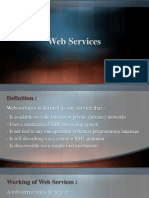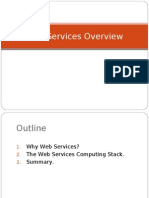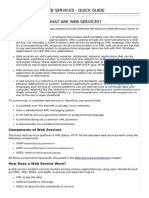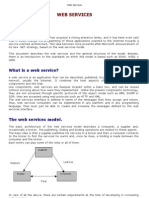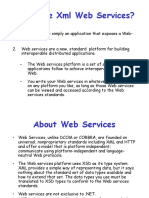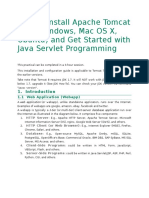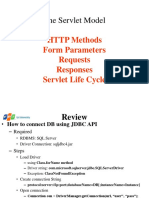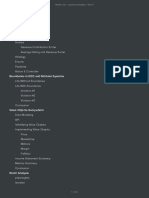0% found this document useful (0 votes)
18 views59 pages4 Java Web Services I
This document provides a comprehensive overview of Java Web Services, detailing their definition, architecture, implementation lifecycle, and types, specifically SOAP and RESTful services. It outlines the roles of service providers, requestors, and registries, along with the operations involved in web service architecture such as publication, finding, and binding. Additionally, it discusses web service features, advantages and disadvantages of SOAP and REST, and includes practical examples of JAX-RS for creating and consuming RESTful web services.
Uploaded by
Eliezer KangaCopyright
© © All Rights Reserved
We take content rights seriously. If you suspect this is your content, claim it here.
Available Formats
Download as PDF, TXT or read online on Scribd
0% found this document useful (0 votes)
18 views59 pages4 Java Web Services I
This document provides a comprehensive overview of Java Web Services, detailing their definition, architecture, implementation lifecycle, and types, specifically SOAP and RESTful services. It outlines the roles of service providers, requestors, and registries, along with the operations involved in web service architecture such as publication, finding, and binding. Additionally, it discusses web service features, advantages and disadvantages of SOAP and REST, and includes practical examples of JAX-RS for creating and consuming RESTful web services.
Uploaded by
Eliezer KangaCopyright
© © All Rights Reserved
We take content rights seriously. If you suspect this is your content, claim it here.
Available Formats
Download as PDF, TXT or read online on Scribd
/ 59
